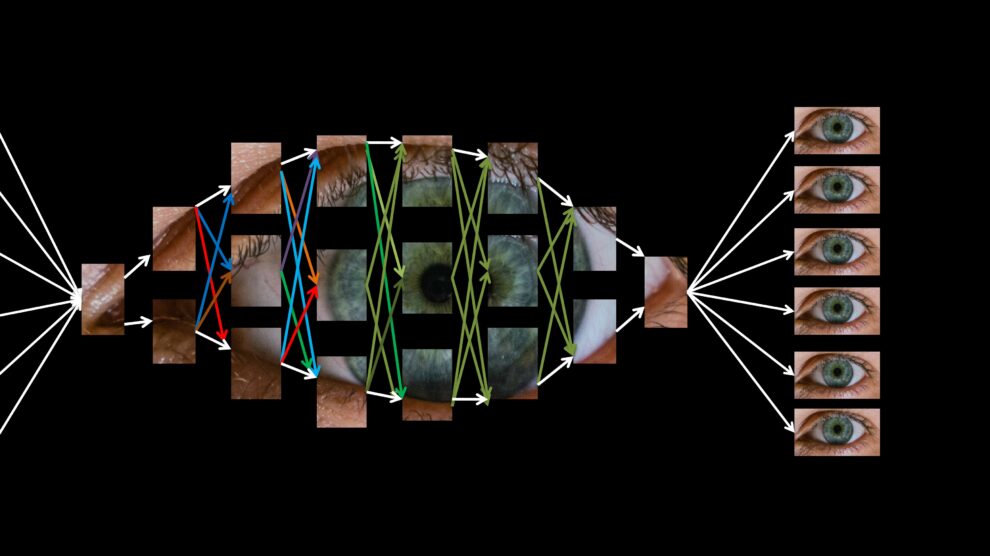
The Epistemological Politics of Gender: The Neurosexist’s Guide to Weaponized Incompetence
By Lindsey T. Thurston and Hilary Thurston
Volume 26, no. 1, Gender: Beyond Binaries
The idea that there are gender/sex-related differences in human behavior has enjoyed broad cultural acceptance.1 As a result, it is common to assume that gender stereotypes reflect a natural and objective truth about human nature. Similarly, a subdiscipline of neuroscience, referred to here as differences neuroscience, works to identify metrics of the brain and behavior that differentiate men and women. Encouraged by models of reproduction in animal studies, differences neuroscience originated from the understanding of sex-related differentiation in the body (e.g., genitalia development), applying similar hormonal theories to explain a binary gender/sex-related differentiation in the brain.2
Most differences neuroscience draws from neurohormonal theory, which emphasizes the role of genetics and hormones on gender/sex development and refutes any major influence from social and environmental factors. The inconsistency of the correlative and cross-sectional data has been well documented, but neurohormonal theory remains the predominant theory of the differences neuroscience field.3 Moreover, neurohormonal theory exploits the transgender experience to investigate the interaction of genetic and hormonal mechanisms of neurodevelopment. Akin to the animal physiologists before them, differences neuroscientists use the so-called “incongruent” sex and gender of transgender participants to better understand how sex chromosomes (i.e., XX, XY) interact with hormones (e.g., estrogen, testosterone) within “congruent,” cisgender brains. This once novel methodology was employed as an “ethical” alternative to hormonal experimentation on cisgender brains, but in reality, uses “the brains and bodies of trans people to reinforce static and oppressive notions of sex and gender.”4 This is one example of the field’s storied neurosexism. Philosopher of science and psychologist Cordelia Fine warned of the neurosexist bias towards, and support for, gender bioessentialism, which presents sex differences in the brain as significant and fixed.5 The differences neuroscience field finds itself stuck between regurgitating biased methods and exploring non-binary models of gender/sex. A common practice of differences neuroscience is to apply biased reverse inferences to the data, including generating research hypotheses from gender stereotypes as opposed to designing objective experiments that aren’t influenced by social stereotypes.6Instead of being data-driven, these experiments are largely, and ironically, socially constructed by the stereotypes used to develop them. On the other side of the differences neuroscience continuum are the non-binary frameworks of gender/sex. These include Sari van Anders’s Sexual Configurations Theory, a multi-dimensional model capturing an individual’s sexual diversity, and Daphna Joel’s Human Brain Mosaic, which emphasizes individual variance in the brain and behavior beyond sex assigned at birth or socially prescribed gender.7 These non-binary frameworks attempt to demonstrate the brain as multi-dimensional. Yet, differences neuroscientists and psychologists continue to justify the use of antiquated, binary methodologies in favor of a scientific robustness that supposedly surpasses social influence. This apparent dichotomy brings into question how such non-binary approaches threaten the neurosexist’s devotion to bioessentialism, ignorance to the oppressive origins of biological jargon, and allegiance to apolitical positivism. Differences neuroscientists and psychologists continue to justify the use of antiquated, binary methodologies in favor of a scientific robustness that supposedly surpasses social influence. Theories and concepts from the field of feminist neuroscience and feminist philosophy help to position bioessentialism as a political project that defines inequality as natural and one that denies the influence of social factors on neurobiological and psychological development. The resistance to new methodologies is a form of weaponized incompetence8 that reflects a knowledge tradition centering a cisgender, white, masculinist social position. How then, does the neurosexist approach weaponize tired notions of sex differences in the brain to uphold the woeful incompetence of outdated frameworks? In this article, we outline three key steps in the employ of the neurosexist researcher that facilitate this feat of discursive manipulation. Bioessentialism is a framework of knowledge production that was developed out of eugenicist logics, which were widely disseminated in social, political, and scientific discourse in the nineteenth and twentieth centuries to justify the objectification, enslavement, and exploitation of disabled, racialized, working class, and sexual and gender minorities.9. The history of Western feminism provides a critical record of theoretical discourse that disputes bioessentialist understandings of gender, which illustrates the oppressive function of this framework and contextualizes the current methodological impasse in gender/sex-related research. When it comes to gender theory, scientists of the nineteenth and twentieth centuries who were informed by eugenics “made strong statements about the social and political role of women, claiming all the while to speak for the scientific truth.”10 They typically referred to women’s reproductive capacity as a natural indication of their divinely ordained social role. Social, political, and religious ideologies informed the scientific beliefs of this time period, which is not dissimilar to the widely held beliefs of current gender/sex psychologists. It can be argued that the father of modern psychology himself, Sigmund Freud, in his quest to validate psychoanalysis as a legitimate science, reproduced the social opinions of his time in his psychological theories.11 His theories about femininity, in particular, have been criticized by feminist thinkers for the ways in which his frameworks position femininity as fundamentally incompatible with subjectivity, thus cementing women’s passivity and subordination as a psychological disposition that explains and justifies their social position under patriarchy.12 Although psychology has developed considerably since Freud, his work remains foundational to the field, and informs the ongoing structural violence of psychiatric pathologization experienced by marginalized subjects.13 Psychoanalytic concepts have become embedded in clinical, academic, institutional, and colloquial language, influencing the epistemologies of neurosexists and feminists alike. We continue to see bioessentialist reasoning about sexual difference employed in the name of feminism. Notably, bioessentialism informs contemporary discourse about trans rights. For example, Trans Exclusionary Radical Feminism (TERF) refers to a radical ideology that equates womanhood with biological sex, and maintains a bioessentialist stance to discriminate and incite violence against trans women, and to exclude trans women from women’s spaces. Proponents of trans exclusionary radical feminist ideology espouse the conviction that women are a group with a singular shared experience of womanhood based on the patriarchal violence experienced by people with vaginas. It arose out of the work of anti-porn feminist writing like that of Andrea Dworkin and Catherine MacKinnon in the 1970s,14 which centered the ways in which cisgender women’s bodies are uniquely subjected to sexualized violence. The objectification and sexualization of the cisgender female body was the main concern in this discourse, and as such, postmodern perspectives that disrupt bioessentialist ideas about gender and the body have been received as an existential threat to the objectives of this radical ideology. Third wave feminist discourse and theories, like intersectional feminist theory, have disputed the idea that bodily or physical similarities are experienced in the same ways socially and culturally (e.g., at intersections of race, class, ability, nation, gender identity, and sexuality).15 When it comes to trans discourse, it is important to recognize the ways in which non-normatively gendered bodies with any perceived association to femininity or womanhood are subjected to patriarchal and sexualized violence. Heteronormativity and rape culture affect more than just cisgender women. To weaponize a binary understanding of gender against women with diverse experiences of womanhood is to collude with the oppressive forces of the colonial, white supremacist hetero capitalist patriarchy. Psychoanalysis has been of interest to feminist thinkers because it represents the dominant theoretical paradigm in modern psychology through which gender and sexuality have been defined. Judith Butler, the queer feminist philosopher, has argued that we are not only subjected to the social concept of binary gender as we develop, but we are born into these gendered scripts to the extent that they become deeply entangled with our identities and the material conditions of our lives, shaping our embodiment.16 Butler’s theory of gender performativity positions gender as a socially constructed, albeit largely unconscious, performance. Differences neuroscience leverages bioessentialism to secure the gender binary as scientific fact, and in so doing, ignores the ways in which gender is socially constructed, undermines the value of diverse forms of experiential knowledge, and blocks innovative scientific development. Through specific language use, scientists create niche jargon through which they foster community and share knowledge with one another. For example, in the field of quantitative intersectionality, the use of mathematical-like terms to represent theoretical concepts can discourage scientists from interacting with cross-disciplinary intersectionality.17 Scientific jargon can even limit researchers from interacting with work of their own field: Overly jargon-y writing can prevent a study from being cited by peers.18 Differences neuroscience has its own jargon, which is utilized under the guise of discerning the biological components of the differences paradigm – think “natal male” as a scientifically accepted and “descriptive” term for a trans woman, as opposed to the community-oriented term “trans woman.” A commonly cited reason for continuing to use stigmatizing jargon in differences neuroscience is to maintain scientific accuracy and to avoid colloquialisms. The former places emphasis on what is thought to be biologically true about gender/sex, and the second prioritizes the scientists’ jargon over community-led language. This tactic maintains an (un)conscious power differential between the scientist and the subject matter whereby the use of stigmatizing language isolates and objectifies the participant. The researcher intentionally keeps the trans participant on the outskirts of a field that is actively placing trans identity at the epicenter. The methods section of a research article is rife with examples of psychologists opting for scientific jargon over community-led language. Salient examples from differences neuroscience are instances of prioritizing participants’ sex assigned at birth over their questionnaire-declared gender identity, the archaic use of “transsexual” in recent publications, and comparisons of trans participants to “controls” with the implicit understanding that control participants are cisgender individuals without gender aberrations. Rather than upholding scientific rigor, this marginalizing jargon creates a unique obstacle for accessing research and actively applying it toward policy change. Ironically, differences researchers have themselves referred to terms like “transgender” as jargon, further demonstrating their deliberate ignorance towards the populations they study.19 This biological and oppressive jargon functions to reinforce neurosexism by weaponizing the researchers’ ignorance of gender theory. After accruing a foundational understanding of neuroimaging in order to critique differences neuroscience, trans sociologist Eric Llaveria Caselles identified a dichotomy that “neuroscientists who look into matters of sex and gender are not expected to learn from or do the same groundwork in gender studies” and yet, this ignorance doesn’t invalidate the research or require acknowledgement of their ignorance to the reader.20 Not only does this expose the biased perception of value assigned to each discipline, but it demonstrates how oppressive language continues to be permissible in a culturally esteemed discipline like neuroscience. The material conditions of our lives are shaped by the social construction and discursive manipulation of the natural world. Here, the examples focus on differences neuroscience and specifically on studies of transgender neuroscience, but the weaponized use of jargon is widespread. Differences neuroscience intentionally uses scientific jargon as a tool to disassemble marginalized communities and make the research inaccessible for non-experts. In addition to upholding bioessentialist views, the use of oppressive and so-called scientific jargon, when community-centered language is readily available, weaponizes the neurosexist’s unwillingness to create accessible science. Differences neuroscience often overemphasizes the biological components of gender/sex differentiation, failing to consider the impact of culture and socialized gender differences on the brain, and erroneously assumes that nature and society are mutually exclusive domains of study. This approach reveals a positivist bias that seeks to identify, measure, and define truth in objective terms. Positivism maintains allegiance to the notion of truth with a capital t and opposes the notion of epistemological diversity. Empiricism and positivism have been conflated in this pursuit of a singular truth, but they are not, in fact, synonymous. The material conditions of our lives are shaped by the social construction and discursive manipulation of the natural world.21 Because we cannot conceive of the material world as distinct from our social experience of it, it’s important to deconstruct how our social experiences influence our understanding of our embodied realities. When it comes to human psychology and neuroscience, it is especially negligent to take this binary stance insofar as there is no site for analysis that is more deeply affected by the imbrication of nature and culture than the human brain. A form of weaponized incompetence can be seen in the way in which the nature versus nurture debate is wielded to defend an objective notion of human nature that has been inherited by an epistemological tradition created by and for white, upper middle-class, cisgender, heterosexual, able-bodied men. This point is well illustrated by the epistemological evolution of Flat Earth theory. Science operates on the evolution and development of more accurate understandings of nature through consideration of new information, frameworks, and perspectives. In the case of gender theory, upholding a traditional view of the gender binary in the face of observable evidence of gender diversity is akin to proponents of Flat Earth theory refusing to take into consideration empirical data that disproves their theory. To cite positivist tradition and the importance of empirical inquiry whilst dismissing data that reports the observable, measurable, and historical diversity of gender identities and expressions is an exercise in weaponized incompetence. The positivist view has been called “the view from nowhere” by feminist theorists arguing for the value of diverse experiences as sources of knowledge.22 Feminist philosopher Sandra Harding (1992) has argued that researchers must take responsibility for their experiential biases, and identify their social positions and influences. She writes, “[The concept of objectivity] offers hope that scientists and science institutions, themselves admittedly historically located, can produce claims that will be regarded as objectively valid without having to examine critically their own historical commitments from which—intentionally or not—they actively construct their scientific research.”23 Rigorous scientific inquiry requires the interrogation of one’s ideological investments, beliefs, values, and ideals, because they all have emotional underpinnings that may affect critical thinking. Rather than playing to the weaponized rhetoric of a neurosexist rationale, we would suggest thinking about gender/sex-related differences from another angle. Instead of asking whether or not the gender binary is biologically true, scientists should consider what might be at stake in accepting that it is not? Does the idea that trans people exist, or that not all women have vaginas, threaten their sense of identity or provoke an emotional response? Critical thought can be impeded because of the inability to understand and regulate our emotional processes.24 The history of psychoanalysis and feminism highlights the political implications of questions about the psychology of sexuality and gender, and the cultural origins of sexual difference. Much of feminist theory, pedagogy, and activism aims to raise consciousness about power relations that are hidden in plain sight. A feminist lens stands to bring critical considerations about power, discourse, and subjectivity to this reflection. In the nature versus nurture debate, feminist thought facilitates a critical consideration of the social and cultural imperative to value biology over that which is socially constructed. Moreover, the history of Western feminist inquiry prompts us to question the extent to which our identities are authentic, natural, and autonomous. In response to the neurosexist position employing positivism to validate hegemonic regimes of truth and power via models from differences neuroscience (e.g., neurohormonal theory), we advocate for a critical, post-structural intervention that asks, how can we overcome or dismantle the oppressive structures that influence our identities if our identities are born of these very structures? Likewise, we cannot expect science to resist our oppression if our ideals of objectivity define knowledge in cisgender, white, masculinist terms. Lindsey T. Thurston is a neurofeminist scientist with a focus on neuroendocrinology. She received her PhD in psychology and neuroscience from the University of Toronto. Through her neuroimaging research, Lindsey attempts to uncover the social gaps of gender/sex-related neuroscience and push the binary boundaries of biopsychosocial categorizations. Hilary Thurston is a PhD Candidate at York University in the Department of Gender, Feminist and Women’s Studies and a Mental Health Counsellor at the City of Toronto. Her research interests include queer attachments and psychoanalytic feminism. Hilary’s professional experience working in Mental Health and Addictions services in Toronto informs her academic pursuits at the intersection of theory and practice. Her work has recently been published in Capacious: Journal for Emerging Affect Inquiry. From the SftP Archives: Relatedly from the SftP Archives: in 1977, Freda Saltzman wrote “Are Sex Roles Biologically Determined?”, in which she outlined the history of sociobiology and scientists’ role in insisting that gender roles are biological in nature. “Clearly, the group which benefits most from such theories is an extremely small but wealthy and privileged class. This elite, through its extensive control of the media, education and funding institutions, can strongly influence public opinion and the direction of research.” Much of Saltzman’s critique remains applicable to the neurosexism highlighted by Thurston & Thurston.Step one: Employ bioessentialism to discredit experiential knowledge production.
Step two: Skirt accountability with “scientific” jargon.
Step three: Maintain scientific agnosticism and positivism.
Conclusion
—
—
Notes
Rebecca Jordan-Young and Raffaella I. Rumiati, “Hardwired for Sexism? Approaches to Sex/Gender in Neuroscience,” Neuroethics 5 (September 2011): 307.





